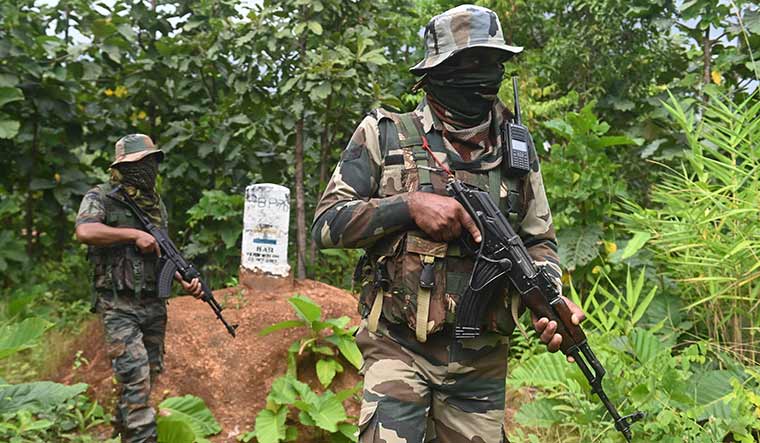The Centre is in a bind after the Mizoram government has said that the collection of biometric and biographic data of Myanmar refugees cannot be done as it would amount to discrimination against people who are blood and kindred brothers and sisters.
The concerns of the Mizoram government come at a time when the ethnic violence in Manipur continues unabated and Chief Minister Biren Singh is keen to stop the free movement regime on the porous border and carry out a fresh survey to identify the illegal migrants from Myanmar entering the country.
The Indo-Myanmar border runs along the territory of several ethnic groups, including the Nagas, China, Manipuri, Mizos and others with strong community linkages with those living across the border. The demarcation of the porous border has affected the communities over the years, where a sense of alienation and insecurity permeates, as clans and communities exist on both sides of the border, explained a top security official.
Efforts have been made by both the countries for fencing the borders but it has faced protests by the tribal communities on both sides as they fear that the demarcation would lead to loss of their land and forest to the other side.
What began as an insurgency for integration and fight for unification of ethnic groups on both sides of the border, has created a security nightmare.
Intelligence officials said the issue has been exploited by Chinese supported insurgent outfits in north-east to cause instability in the region. Over the years it has been observed that most of the arms and ammunition used by the north-east insurgents are sourced from China and transported through the Myanmar route.
Security officials said Myanmar has also been a safe haven for the Indian insurgent groups who are crossing into the country via the porous border. These outfits carry out terrorist strikes and then return to their camp and hideouts across the border, says a report shared with the union home ministry.
It notes that the border areas in Manipur have got infested with cross-border crimes, including smuggling of arms, counterfeit currencies and drug trafficking. And as the north-east sits on the golden triangle, it becomes the transit route for large scale drug trafficking.
With a red flag being raised by the Mizoram government, security officials in New Delhi said quick out of the box solutions need to be brought to the table to handle the crisis.
Issues like the identification of the Myanmar refugees, the cross border migration problem and the free movement regime may not find an immediate solution, said the official.
The ball is in the court of the border guarding forces to tackle the problem and stop influx of insurgents and also bring relief to the border population.
As of now the border management is being done by the Assam Rifles through border patrolling and visiting the border from time to time. They are being assisted by the state police of several north-eastern states. In Nagaland, the armed village guards in the border villages also form the first line of defence and information in case of any exigencies. However, they are not equipped to deal with the problem in an organised and structured way.
Security officials admitted that in addition to the fencing strategy for the 15,000 km long border, New Delhi will have to formulate a multimodal approach to mitigate the challenges knocking on its door.



